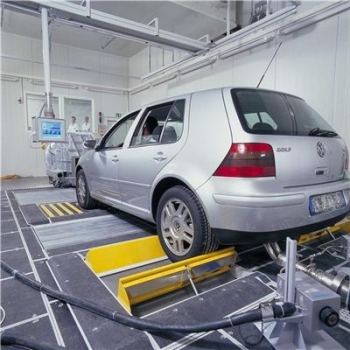The Pan-European research project, started by the Physikalisch-Technische Bundesanstalt (PTB) in June this year, will work on the emission specifications set by the EURO Standard 5 which is going to be effective for all new vehicle models from September this year.
The new standard will not only consider the mass density of soot particles but will also concentrate on their number, which is more relevant to assess health hazards.
 For the periodic exhaust examination, also the proportion of soot particles is determined
For the periodic exhaust examination, also the proportion of soot particles is determined
The percentage of diesel-engine vehicles have increased from mere 2% in 1980 to around 50% in 2011, and in certain vehicle models, it is above 90%. There has been a drastic reduction in the quantity of the coarse soot particles in recent times but modifications in injection techniques have resulted in increased levels of ultra fine soot particles that are less than 0.1 µm. This in turn causes respiratory problems and metrology is faced with major problems. The presence of platinum-group elements (platinum, palladium and rhodium) in the air also poses health problems and precise quantities of these elements in the air need to be known to address the problems.
The opacimeters currently utilized for regular exhaust gas inspections are not able to gauge the presence of very minute particles. The measurement technology needs to be further developed with soot sensors and particle counters to precisely determine the number of pollutant particles.
The project, proposed for three years, will work on the approval for new measuring instruments, a measuring procedure that includes approval tests, standards, regular exhaust reviews to the new specifications. Initially, the project will aim to improve the measuring procedures in all these areas to generate more uniformity.
The importance of the project is indicated by the presence of huge number of partners from the automobile and measuring instrument manufacturing sectors.